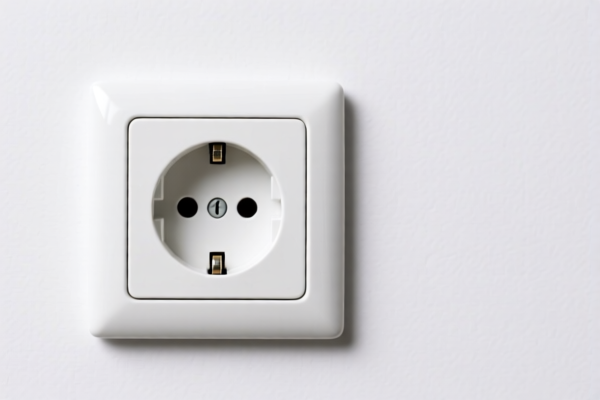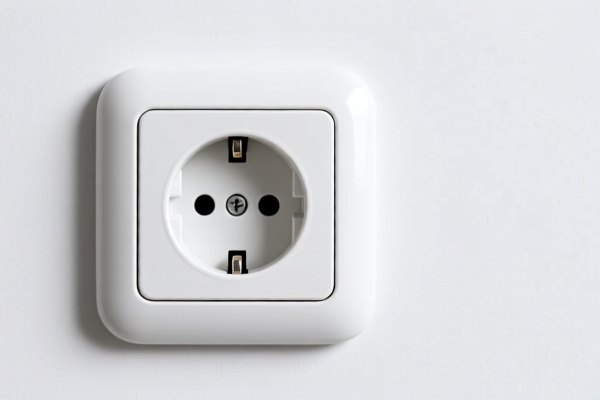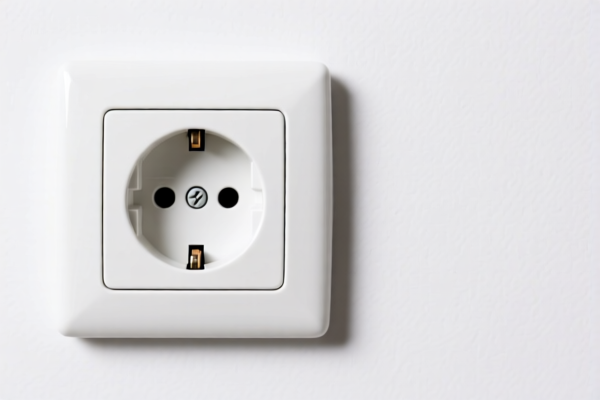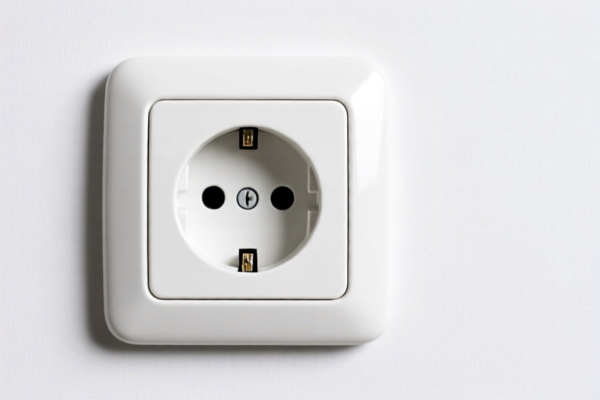| HS Code | Official Doc | Tariff Rate | Origin | Destination | Effective Date |
|---|---|---|---|---|---|
| 8536610000 | Doc | 57.7% | CN | US | 2025-05-12 |
| 8536610000 | Doc | 57.7% | CN | US | 2025-05-12 |
| 8537109170 | Doc | 57.7% | CN | US | 2025-05-12 |
| 8537109160 | Doc | 57.7% | CN | US | 2025-05-12 |
| 8535908020 | Doc | 57.7% | CN | US | 2025-05-12 |
| 8535908040 | Doc | 57.7% | CN | US | 2025-05-12 |
| 8538908160 | Doc | 58.5% | CN | US | 2025-05-12 |
| 8538908140 | Doc | 58.5% | CN | US | 2025-05-12 |
| 3926909987 | Doc | 42.8% | CN | US | 2025-05-12 |
| 3925900000 | Doc | 60.3% | CN | US | 2025-05-12 |




Electrical Sockets
Electrical sockets, also known as outlets, receptacles, or power points, are fixed points in a building that provide access to the electrical power supply. They are essential components of a building's electrical system, allowing for the convenient and safe connection of electrical devices.
Material
Sockets consist of several key materials:
- Housing: Typically made of durable plastic (often PVC or nylon) to provide insulation and protection. Some older sockets may use Bakelite.
- Contacts: Brass or bronze alloys are commonly used for the internal contacts due to their excellent conductivity and resistance to corrosion. Silver plating is sometimes added to improve conductivity further.
- Wiring Terminals: Usually brass or steel, designed to securely hold electrical wires.
- Mounting Hardware: Steel or plastic screws and brackets are used for secure installation within the wall.
Purpose
The primary purpose of an electrical socket is to provide a safe and standardized interface for connecting electrical devices to the building's power supply. They eliminate the need for direct wiring of each appliance, enhancing safety and convenience.
Function
Sockets function by establishing an electrical circuit when a compatible plug is inserted. This involves:
- Live (Hot): Carries the electrical current from the power source.
- Neutral: Provides the return path for the current, completing the circuit.
- Ground (Earth): A safety feature that provides a path for fault currents to flow to ground, preventing electrical shock. Not all sockets have a ground connection.
- Mechanical Connection: The physical design of the socket ensures a secure connection between the plug and the socket contacts, maintaining a stable electrical connection.
Usage Scenarios
Electrical sockets are ubiquitous in modern buildings and are used in a wide variety of applications:
- Residential: Powering lights, appliances (refrigerators, ovens, washing machines), electronics (televisions, computers), and charging devices.
- Commercial: Supplying power to office equipment, machinery, lighting systems, and HVAC systems.
- Industrial: Providing power for heavy-duty machinery, production lines, and specialized equipment.
- Outdoor: Weather-resistant sockets are used for powering garden lights, power tools, and other outdoor devices.
Common Types
Electrical sockets vary significantly based on country and regional standards. Some common types include:
- Type A (North America, Japan): Two flat parallel prongs. Often ungrounded.
- Type B (North America, Japan): Similar to Type A, but with a round grounding pin.
- Type C (Europe, South America, Asia): Two round prongs. Ungrounded.
- Type D (India, Nepal): Three large round prongs.
- Type E (France, Belgium, Poland): Two round prongs with a grounding pin.
- Type F (Germany, Russia, most of Europe): Two round prongs with grounding clips on the sides.
- Type G (United Kingdom, Ireland, Malta, Malaysia): Three rectangular prongs.
- Type H (Israel): Three round prongs.
- Type I (Australia, New Zealand, China): Three flat prongs, angled.
- Type J (Switzerland, Liechtenstein): Three round prongs.
- Type K (Denmark, Greenland): Two round prongs with a grounding pin.
- Type L (Italy, Chile): Three round prongs, spaced in a specific pattern.
- Type M (South Africa): Three large round prongs.
- NEMA Standards (North America): A comprehensive system of standards defining various socket configurations based on voltage and amperage requirements (e.g., NEMA 5-15R, NEMA 5-20R).
Safety Considerations
- Grounding: Properly grounded sockets are crucial for preventing electrical shock.
- Overload Protection: Circuit breakers and fuses protect against overloads and short circuits.
- GFCI Outlets: Ground Fault Circuit Interrupter (GFCI) outlets are required in wet locations (bathrooms, kitchens) to quickly shut off power in the event of a ground fault.
- Polarity: Correct polarity is essential for proper appliance operation and safety.
- Child Safety: Tamper-resistant receptacles (TRRs) prevent children from inserting objects into the socket.
Electrical sockets fall under apparatus for switching or protecting electrical circuits, or for making connections to or in electrical circuits. Here are the relevant HS codes based on the provided information:
-
8536610000: This HS code covers electrical apparatus for switching or protecting electrical circuits, or for making connections to or in electrical circuits (for example, switches, relays, fuses, surge suppressors, plugs, sockets, lamp-holders and other connectors, junction boxes), for a voltage not exceeding 1,000 V; connectors for optical fibers, optical fiber bundles or cables: Lamp-holders, plugs and sockets: Lamp-holders.
- 85: Electrical machinery and equipment.
- 36: Switchgear, relays, fuses, circuit breakers and other electrical switchgear apparatus.
- 61: Lamp-holders, plugs and sockets.
- The tariff details for this code are: Basic tariff: 2.7%, Additional tariff: 25.0%, Post-April 2, 2025, additional tariff: 30.0%, Total tariff: 57.7%.
-
8537109170: This HS code covers boards, panels, consoles, desks, cabinets and other bases, equipped with two or more apparatus of heading 8535 or 8536, for electric control or the distribution of electricity, including those incorporating instruments or apparatus of chapter 90, and numerical control apparatus, other than switching apparatus of heading 8517: For a voltage not exceeding 1,000 V: Other: Other Other: Other.
- 85: Electrical machinery and equipment.
- 37: Switchgear, relays, fuses, circuit breakers and other electrical switchgear apparatus.
- 10: Boards, panels, consoles, desks, cabinets and other bases.
- 91: For a voltage not exceeding 1,000 V.
- 70: Other.
- The tariff details for this code are: Basic tariff: 2.7%, Additional tariff: 25.0%, Post-April 2, 2025, additional tariff: 30.0%, Total tariff: 57.7%.
-
3926909987: This HS code covers other articles of plastics and articles of other materials of headings 3901 to 3914: Other: Other Rigid tubes or pipes suitable for use as electrical conduit. While not directly sockets, sockets often utilize rigid tubes or pipes as conduit.
- 39: Plastics and articles thereof.
- 26: Other articles of plastics.
- 90: Other.
- 99: Other.
- 87: Rigid tubes or pipes suitable for use as electrical conduit.
- The tariff details for this code are: Basic tariff: 5.3%, Additional tariff: 7.5%, Post-April 2, 2025, additional tariff: 30.0%, Total tariff: 42.8%.
-
3925900000: This HS code covers builders' ware of plastics, not elsewhere specified or included: Other. Sockets may be constructed of plastic and fall under this category.
- 39: Plastics and articles thereof.
- 25: Builders' ware of plastics.
- 90: Other.
- The tariff details for this code are: Basic tariff: 5.3%, Additional tariff: 25.0%, Post-April 2, 2025, additional tariff: 30.0%, Total tariff: 60.3%.
Customer Reviews
No reviews yet.